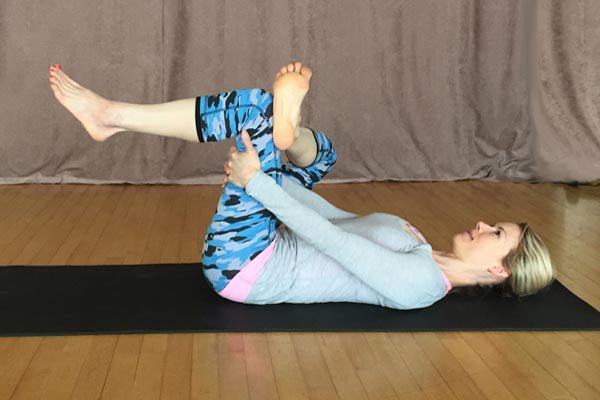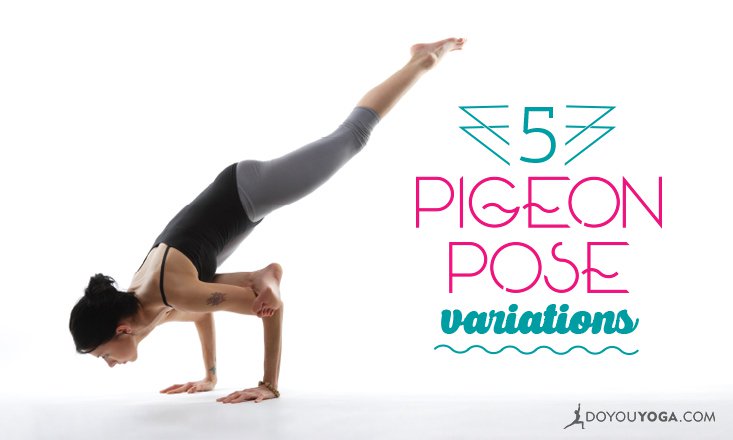Pigeon Pose, or Eka Pada Rajakapotasana, primarily targets the external rotators of the hips. These tight and usually overworked areas breathe a sigh of relief when the time comes to settle into this healing pose.
However, very often, the knees, ankles and lower back do not want to cooperate during the traditional Pigeon pose and leave us feeling only partly stretched out or worse—cause lingering pain and discomfort that if unchecked can turn into chronic injury.
Avoid unwanted injuries and learn the proper techniques to do this pose with the help of our free 30 Day Yoga Challenge. With regular practice, your hips will eventually feel less tense leading to a more relaxed Pigeon Pose.
So, how do your hips reap the benefits of Pigeon Pose without putting the rest of the body in harm’s way? Try one (or all) of the following variations that will emphasize the same muscle groups but from different angles.
Note: Please experiment with these postures under the guidance of a yoga teacher you trust.
1. Pigeon on a Perch
Place a block (or blanket) beneath the front leg to help square off the hips which will keep the lumbar spine better aligned and will not place any undue strain on the joints.
2. Upside Down Pigeon (aka Thread the Needle Pose)
 Credit: Kristin McGee
Credit: Kristin McGeeYou can have your way with gravity here and use only the amount of resistance you desire rather than resting all of your body weight on the legs. Remember to keep the foot flexed and accentuate pressing the knee of the crossed leg away from the chest so you can fully isolate that outer hip stretch you crave.
3. Double Pigeon Pose
 Credit: Julia Lee
Credit: Julia LeeTry this seated Double Pigeon Pose sometimes called Fire Log Pose to keep both hips solidly rooted into the ground. This grounding helps prevent the asymmetrical shifts in the lower back that are usually the culprit of SI Joint, Lumbar Spine and Quadratus Lumborum injuries.
4. Standing Pigeon On Chair Pose
 Credit: Fansshare.com
Credit: Fansshare.comYou can build strength and increase your range of motion with this hybrid variation. Stand on one leg and do a figure four cross with the other to duplicate that pigeon stretch. To really turn up the heat, strive to sit back with the standing leg just like a chair pose. Make sure to repeat this on the other side to keep you balanced. Keep reading because this asana also serves as a preparation for the next variation!
5. Flying Pigeon

Please keep in mind that a variation is a way to add choice and variety to your practice, and does NOT indicate that one pose is easier than another. Also, remember that even within these many options, you will learn that your body has its own unique expression of each asana.
Don’t push your body where it can’t or doesn’t want to go at that moment, and I hope you enjoy expanding your practice and that you keep evolving on and off your mat.

 Credit:
Credit: 
